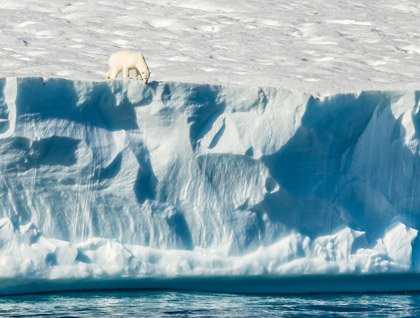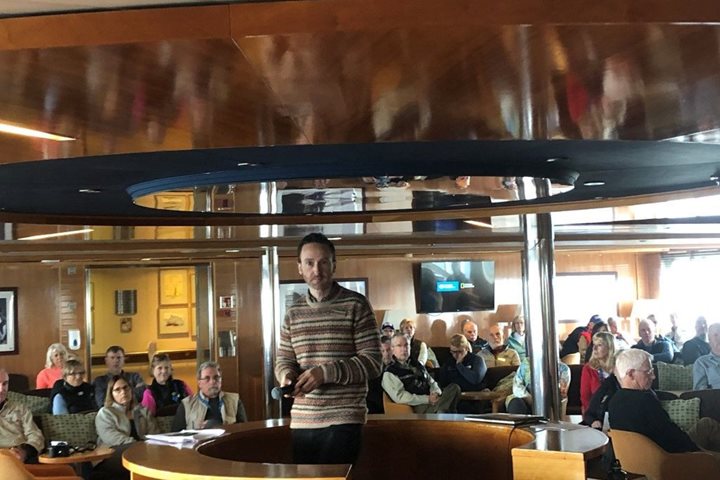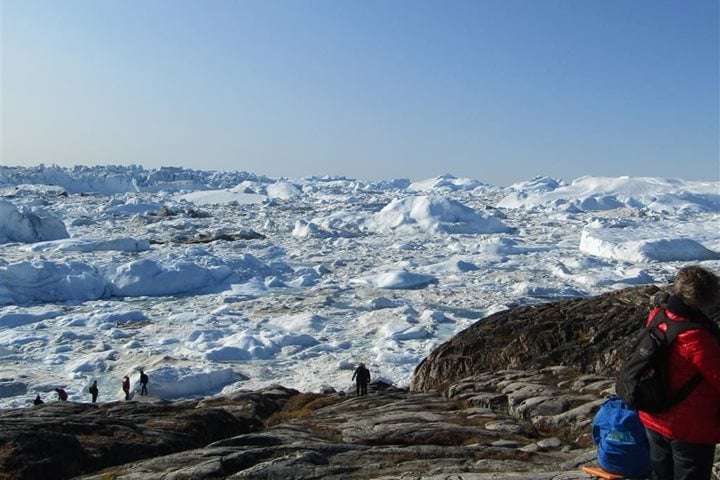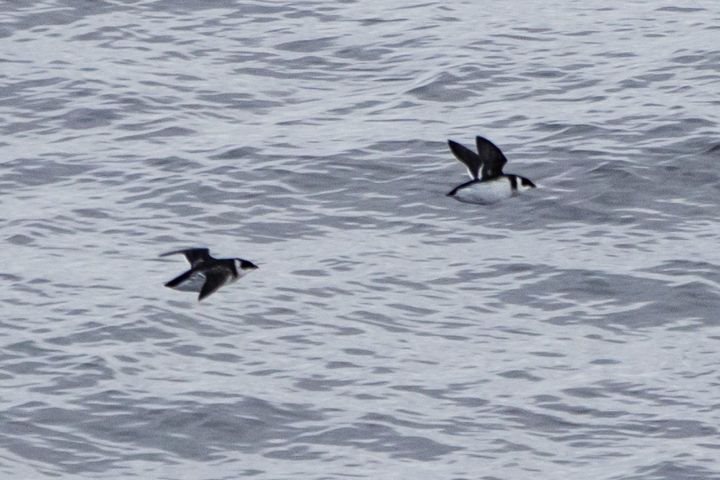Sunrise came early this morning (02:43) to all on board National Geographic Explorer, breaking in hues of red and orange. The ship’s bow sliced cleanly through glass-flat water as we approached Isabella Bay on Baffin Island. Breakfast being served was the only thing to disturb the relative quiet and calm of the growing day, when the call came from the bridge that polar bears had been spotted on a huge iceberg at the entrance to the bay. Creamy yellow bodies emerged from the blue-white backdrop as first one bear, then two, then three, and finally six ice bears were sighted all on the same floating temporary home.
Excited bear enthusiasts spilled out onto the deck spaces as binoculars were raised, camera lenses were focused, and subdued voices shared bear positions up and down the iceberg. With a backdrop of Baffin Island itself, this huge iceberg had become a literal polar bear magnet! Cameras clicked and whirred as gigabyte after gigabyte of bear photos filled memory cards and prompted many to have to return to their cabins for fresh cards. The scene lay out before us as absolutely picture perfect and Captain Oliver Kruess slowly maneuvered the ship along the ice face, giving us an endless variety of angles and views of our furry friends.
Leaving the bears just as we had found them, we now turned further into Isabella Bay. We hadn’t gotten very far at all when blows were sighted off the bow. Whales! Further inspection confirmed what we had been hoping for; not just any whales, but bowhead whales! We crept ever so delicately closer as massive heads began to emerge at the base of large, V-shaped blows. With Baffin Island again the perfect backdrop, we started seeing single whales, and then by twos and threes, and finally a dozen or so at once. We were literally surrounded in perhaps 30 or so bowhead whales, each of whom would raise its mighty flukes at the end of a breathing sequence. At nearly 60 feet in length, and well over 200,000 pounds in weight, these are mighty leviathans indeed.
Afternoon found us in Arctic Harbour at the former site of a 19th-century British whaling station. Groups of hikers fanned out across the tundra looking at and pondering the lifestyle that these men had endured at such a remote location. Four graves stood in testament to just how arduous a life this must have been. By the 20th century these whales were literally taken to commercial extinction. As our whales this morning had indicated, bowheads are now making a comeback here in the Canadian Arctic. Once believed to number only a few hundred individuals, recent surveys have found that the eastern bowhead population may now be as high as 14,000. Towards that recovery the Canadian Government can be credited with the formation of the Niginganiq National Marine Wildlife Area, a preserve established specifically for the protection of bowhead whales here in Isabella Bay and along the northeast coast of Baffin Island. Once again bowhead whales are freely frolicking in these waters, surrounded by the majesty of the snow-covered peaks of Baffin Island!







